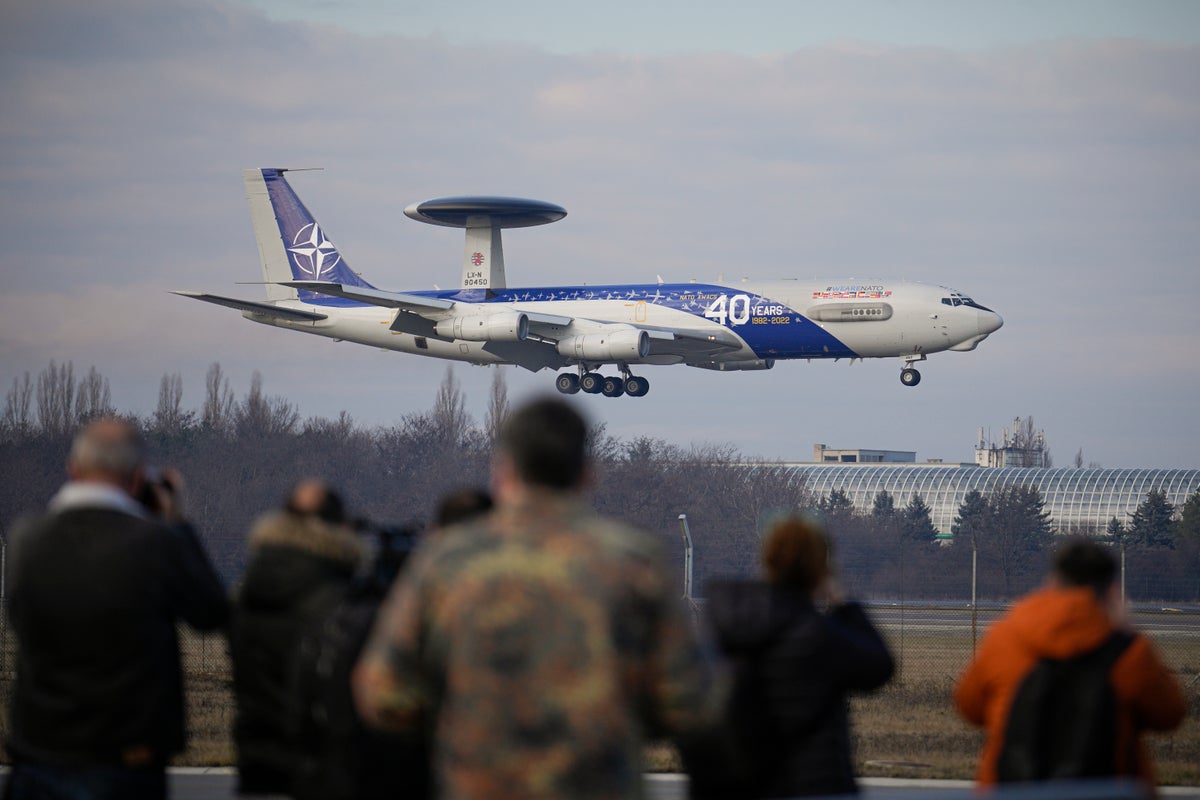
Two of three NATO surveillance planes deployed temporarily to Romania have arrived at an air base near Bucharest, from where they will fly missions to monitor Russian military activity near the borders of the 30-nation military alliance.
The Airborne Warning and Control System planes landed at Otopeni air base on Tuesday afternoon, with one more expected later. They are due to be based there for several weeks.
The AWACS aircraft, which NATO refers to as its “eyes in the sky” belong to a fleet of 14 usually based in west Germany. They have large fuselage-mounted radar domes and can detect aircraft hundreds of kilometers away.
Germany’s ambassador to Romania, Peer Gebauer, said on the airfield after the first plane landed that the deployment "underlines our resolve to stay strong in this time of crisis.”
“This AWACS surveillance mission, which is to start today in Romania, is another proof of our resolve — of our commitment to defend every inch of allied territory,” he said.
Since Russia invaded Ukraine on Feb. 24, NATO has bolstered its presence on Europe’s eastern flank, including by sending additional multinational battlegroups to alliance members Romania, Hungary, Bulgaria, and Slovakia. The AWACS have also performed regular patrols over eastern Europe and the Baltic Sea region to track Russian warplanes near NATO borders.
Sebastien Slavitescu, a NATO expert and former Romanian diplomat, said the AWACS could offer reassurance to countries close to the war, such as Romania, which borders Ukraine.
“The NATO eastern flank is very, very close to a war, a war that we haven’t had (in Europe) since the Second World War,” he said. “These planes or any increased military assistance for Romania in these challenging times in our vicinity are most welcome.”
He added that the AWACS missions send a clear message to Moscow: “We’re watching you, we know what you’re doing.”
Romania, which joined NATO in 2004, has played an increasingly large role in the alliance throughout the war, including hosting a NATO meeting of foreign ministers in Bucharest last November.
The AWACS Boeing E-3s were jointly purchased in 1977 at the height of the Cold War, when Jimmy Carter became U.S. president and as a missile crisis with the Soviet Union was beginning to fester in Europe.
Along with a small drone fleet in Italy, the planes are among the few military assets that NATO owns as an alliance. They’ve been routinely refurbished so they can keep flying until 2035.
Some were deployed in U.S. skies after the September 11, 2001 attacks to help protect cities and nuclear power plants. That was the first time in NATO’s history that it deployed assets to support the defense of one of its members. They can also be used for air-policing, evacuation operations, and provide help during natural disasters.







